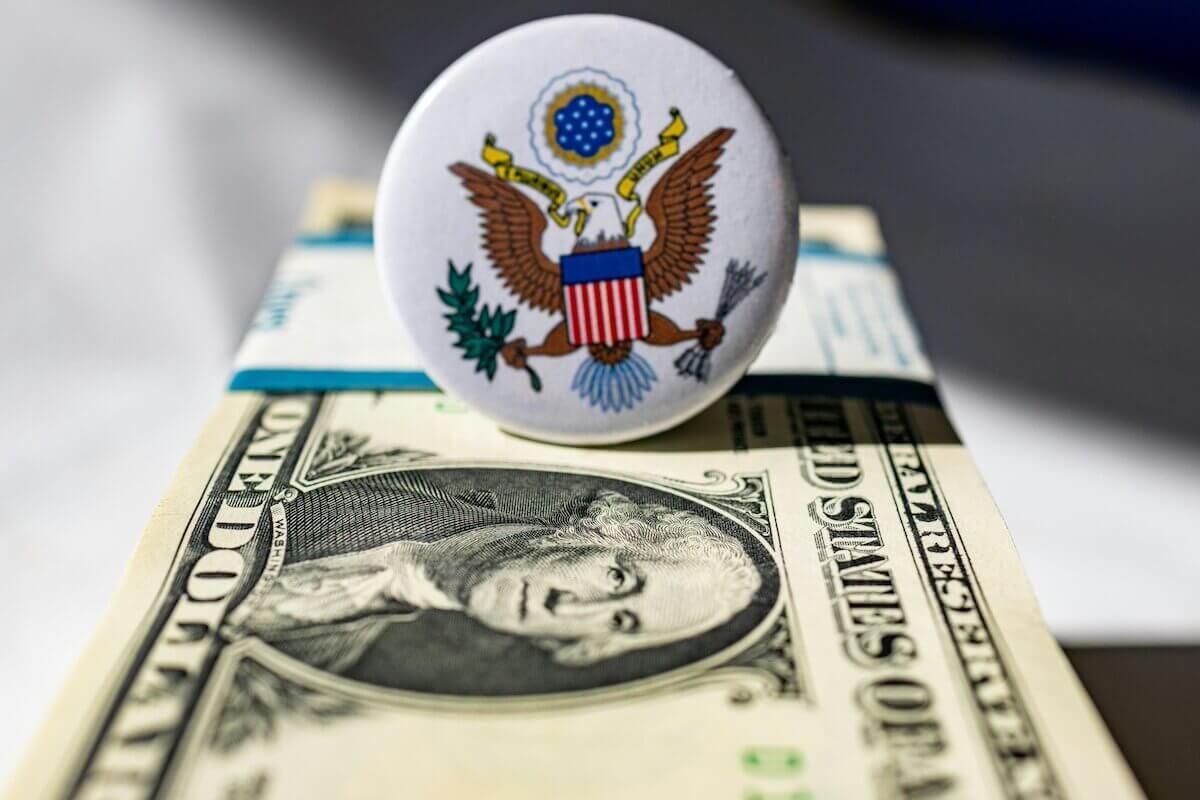Advertiser Disclosure
Last update: March 28, 2025
5 minutes read
Federal Loans for Graduate Students
Are you wondering how to fund your graduate studies? Dive into the federal loan options available for graduate students and discover the best choices for you.

By Brian Flaherty, B.A. Economics
Edited by Rachel Lauren, B.A. in Business and Political Economy
Learn more about our editorial standards



By Brian Flaherty, B.A. Economics
Edited by Rachel Lauren, B.A. in Business and Political Economy
Learn more about our editorial standards
Embarking on a graduate degree is an exciting journey, but figuring out how to finance it can be challenging. Fortunately, there are federal loans designed specifically for graduate students.

Key takeaways
- Federal Direct Unsubsidized Loans offer up to $20,500 annually without a credit check
- Graduate PLUS Loans can cover remaining costs but require a credit check and have higher interest rates
- Both loan types provide flexible repayment plans and potential loan forgiveness programs
Types of federal graduate student loans
When it comes to financing your graduate studies through federal loans, there are two main options to consider: Federal Direct Unsubsidized Loans and Federal Direct Graduate PLUS Loans. Let's break down what each offers.
Federal Direct Unsubsidized Loans
Colloquially known as Stafford Loans, these are a staple for many graduate students.
- Who's eligible? If you're enrolled at least half-time in a graduate or professional program at an eligible school, you're likely eligible. Good news—no credit check is required!
- How much can you borrow? You can borrow up to $20,500 per academic year. The actual amount you'll receive is determined by your school based on your Free Application for Federal Student Aid (FAFSA) and the school’s cost of attendance.
- Interest rates and fees: Direct Unsubsidized Loans come with fixed interest rates, which are generally lower than those of Graduate PLUS Loans. For the 2024-2025 school year, those rates are 8.08% and 9.08%, respectively.
- Repayment: Interest accrues from the moment the loan is disbursed, making you responsible for it even while you're in school. But don't worry—you don’t have to make any payments on your loan until you graduate and reach the six-month grace period. Consider making payments while in school to manage costs, however.
Federal Direct Graduate PLUS Loans
If you need more funding beyond the Unsubsidized Loan limits, Graduate PLUS Loans might be your solution.
- Who's eligible? Graduate or professional students enrolled at least half-time in an eligible program. Unlike Unsubsidized Loans, a credit check is required. While there is no minimum credit score, bankruptcy or delinquency will likely disqualify you.
- How much can you borrow? You can borrow up to the cost of attendance minus any other financial aid you receive. Essentially, it can cover whatever's left of your educational expenses.
- Interest rates and fees: Expect a higher fixed interest rate—currently 9.08% for the 2024-2025 academic year—and an origination fee, which is a percentage of the loan amount. Be mindful of these costs when considering how much to borrow.
- Credit requirements: If you have an adverse credit history, you may still qualify by meeting additional requirements or obtaining an endorser (similar to a cosigner).

TuitionHero Tip
Did you know that with Graduate PLUS Loans, you can potentially cover the entire cost of your graduate education? That includes tuition, books, housing, and more—all with one loan!
Key considerations and benefits
Before you decide which loan is right for you, here are some important factors to consider:
- Interest rates and fees: Direct Unsubsidized Loans usually have lower interest rates and fees compared to Graduate PLUS Loans. Both offer fixed rates, providing stability over the life of the loan. Understanding the difference between fixed and variable rates can help you make an informed choice.
- Credit checks: No credit check is needed for Direct Unsubsidized Loans, making them accessible if you're concerned about your credit history. Graduate PLUS Loans do require a credit check, but if you have an adverse credit history, you may still qualify with an endorser.
- Repayment options: Both loan types come with flexible repayment plans, including income-driven repayment. You might also be eligible for loan forgiveness programs if you work in certain public service jobs.
- Deferment and forbearance: Facing financial hardship? You can temporarily postpone or reduce your loan payments through deferment or forbearance options.
- Consolidation and forgiveness: Graduate PLUS Loans can be consolidated with other federal loans, simplifying your repayment process. Benefits like death and disability discharge and eligibility for Public Service Loan Forgiveness (PSLF) can add extra peace of mind.
Application and eligibility
Ready to apply? Here's what you need to know:
- Complete the FAFSA: Your journey starts with the FAFSA. It's used to determine your eligibility and helps your school figure out your loan amounts.
- Enrollment requirements: Be enrolled at least half-time for both Direct Unsubsidized Loans and Graduate PLUS Loans at an eligible institution.
- Mind the deadlines: For the 2024-2025 academic year, the final date to complete the FAFSA is June 30, 2025. Deadlines can vary, so always check with your school's financial aid office.
Compare private student loans now
TuitionHero simplifies your student loan decision, with multiple top loans side-by-side.
Compare Rates

Why trust TuitionHero
TuitionHero breaks down federal loans for graduate students, including Direct Unsubsidized Loans and Graduate PLUS Loans. Learn about borrowing limits, interest rates, repayment options, and key considerations to make the best financial decisions for your advanced degree.
Frequently asked questions (FAQ)
If you have a less-than-stellar credit history, you can still access Direct Unsubsidized Loans since they don't require a credit check. For Graduate PLUS Loans, you might need an endorser or to meet additional criteria set by your school. Learn more about how to qualify for a private student loan with bad credit.
Absolutely! Both loan types offer in-school deferment, meaning you won't need to start repaying until after you graduate, leave school, or drop below half-time enrollment.
Yes, there are several programs available. For instance, the Public Service Loan Forgiveness (PSLF) program may forgive your remaining loan balance after you make 120 qualifying payments while working full-time for a qualifying employer.
Interest rates determine how much extra you'll pay over the life of the loan. A lower interest rate means you'll pay less in the long run.
For example, Direct Unsubsidized Loans typically have a lower interest rate than Graduate PLUS Loans, potentially saving you money. Understanding concepts like compound interest can help you see how interest accumulates over time.
Final thoughts
By understanding the ins and outs of Direct Unsubsidized Loans and Graduate PLUS Loans, you can make informed decisions that align with your financial situation and academic goals. Remember to complete your FAFSA on time, consider your actual needs before borrowing, and explore the flexible repayment options available.
Source
Author

Brian Flaherty
Brian is a graduate of the University of Virginia where he earned a B.A. in Economics. After graduation, Brian spent four years working at a wealth management firm advising high-net-worth investors and institutions. During his time there, he passed the rigorous Series 65 exam and rose to a high-level strategy position.
Editor

Rachel Lauren
Rachel Lauren is the co-founder and COO of Debbie, a tech startup that offers an app to help people pay off their credit card debt for good through rewards and behavioral psychology. She was previously a venture capital investor at BDMI, as well as an equity research analyst at Credit Suisse.
At TuitionHero, we're not just passionate about our work - we take immense pride in it. Our dedicated team of writers diligently follows strict editorial standards, ensuring that every piece of content we publish is accurate, current, and highly valuable. We don't just strive for quality; we aim for excellence.
Related posts
While you're at it, here are some other college finance-related blog posts you might be interested in.
Shop and compare student financing options - 100% free!

Always free, always fast
TuitionHero is 100% free to use. Here, you can instantly view and compare multiple top lenders side-by-side.

Won’t affect credit score
Don’t worry – checking your rates with TuitionHero never impacts your credit score!

Safe and secure
We take your information's security seriously. We apply industry best practices to ensure your data is safe.
Finished scrolling? Start saving & find your private student loan rate today
Compare Personalized Rates


